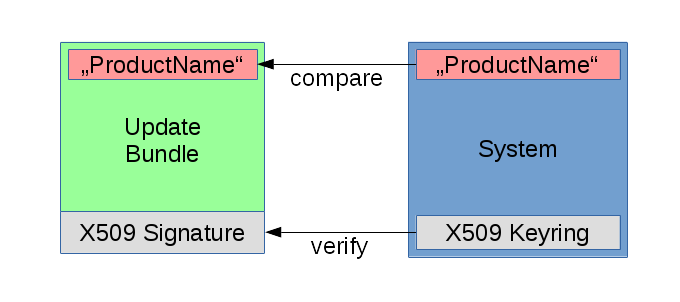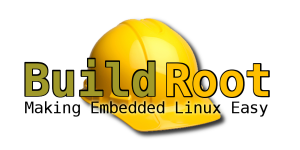Welcome to the RAUC documentation!
Contents:
The Need for Updating
Updating an embedded system is always a critical step during the life cycle of an embedded hardware product. Updates are important to either fix system bugs, solve security problems or simply for adding new features to a platform.
As embedded hardware often is placed in locations that make it difficult or costly to gain access to the board itself, an update must be performed unattended; for example either by connecting a special USB stick or via some network roll-out strategy.
Updating an embedded system is risky; an update might be incompatible, a procedure crashes, the underlying storage fails with a write error, or someone accidentally switches the power off, etc. All this may occur but should not lead to having an unbootable hardware at the end.
Another point besides safe upgrades are security considerations. You would like to prevent that someone unauthorized is able to load modified firmware onto the system.
What is RAUC?
RAUC is a lightweight update client that runs on your embedded device and reliably controls the procedure of updating your device with a new firmware revision. RAUC is also the tool on your host system that lets you create, inspect and modify update files (”bundles”) for your device.
The decision to design was made after having worked on custom update solutions for different projects again and again while always facing different issues and unexpected quirks and pitfalls that were not taken into consideration before.
Thus, the aim of RAUC is to provide a well-tested, solid and generic base for the different custom requirements and restrictions an update concept for a specific platform must deal with.
When designing the RAUC update tool, all of these requirements were taken into consideration. In the following, we provide a short overview of basic concepts, principles and solutions RAUC provides for updating an embedded system.
And What Not?
RAUC is NOT a full-blown updating application or GUI. It provides a CLI for testing but is mainly designed to allow seamless integration into your individual Applications and Infrastructure by providing a D-Bus interface.
RAUC can NOT replace your bootloader who is responsible for selecting the appropriate target to boot, but it provides a well-defined interface to incorporate with all common bootloaders.
RAUC does NOT intend to be a deployment server. On your host side, it only creates the update bundles. You may want to have a look at rauc-hawkbit-updater for interfacing with the hawkBit deployment server.
RAUC bundles are NOT a general purpose transport container.
This means that on your target side you should not use rauc extract.
Instead use rauc install or the D-Bus API to trigger an installation.
Any necessary customization should be done using hooks and handlers.
And finally, factory bring up of your device, i.e. initial partitioning etc. is also out of scope for an update tool like RAUC. While you may use it for initially filling your slot contents during factory bring up, the partitioning or volume creation must be made manually or by a separate factory bring up tool (such as systemd-repart).
Key Features of RAUC
Fail-Safe & Atomic:
An update may be interrupted at any point without breaking the running system.
Update compatibility check
Mark boots as successful / failed
Cryptographic signing and verification of updates using OpenSSL (signatures based on x.509 certificates)

Keys and certificates on PKCS#11 tokens (HSMs) are supported
Built-In HTTP(S) streaming support for updates
No intermediate storage on target required.
Optional encryption of update bundles
Encryption for a single or multiple recipients (public keys) supported
Flexible and customizable redundancy/storage setup
Symmetric setup (Root-FS A & B)
Asymmetric setup (recovery & normal)
Application partition, data partitions, …
Allows grouping of multiple slots (rootfs, appfs) as update targets
Bootloader interface supports common bootloaders
-
Well integrated with bootchooser framework
Storage support:
ext4 filesystem
eMMC boot partitions (atomic update)
vfat filesystem
UBI volumes
UBIFS
JFFS2
raw NAND flash (using nandwrite)
raw NOR flash (using flashcp)
squashfs
MBR partition table
GPT partition table
Independent from update sources
USB Stick
Software provisioning server (e.g. Hawkbit)
Controllable via D-Bus interface
Supports data migration
Several layers of update customization
Update-specific extensions (hooks)
System-specific extensions (handlers)
Fully custom update script
Build-system support
Yocto support in meta-rauc
PTXdist support since 2017.04.0.
Buildroot support since 2017.08


